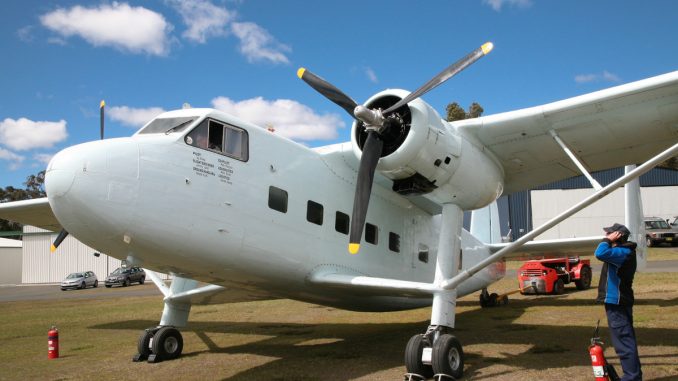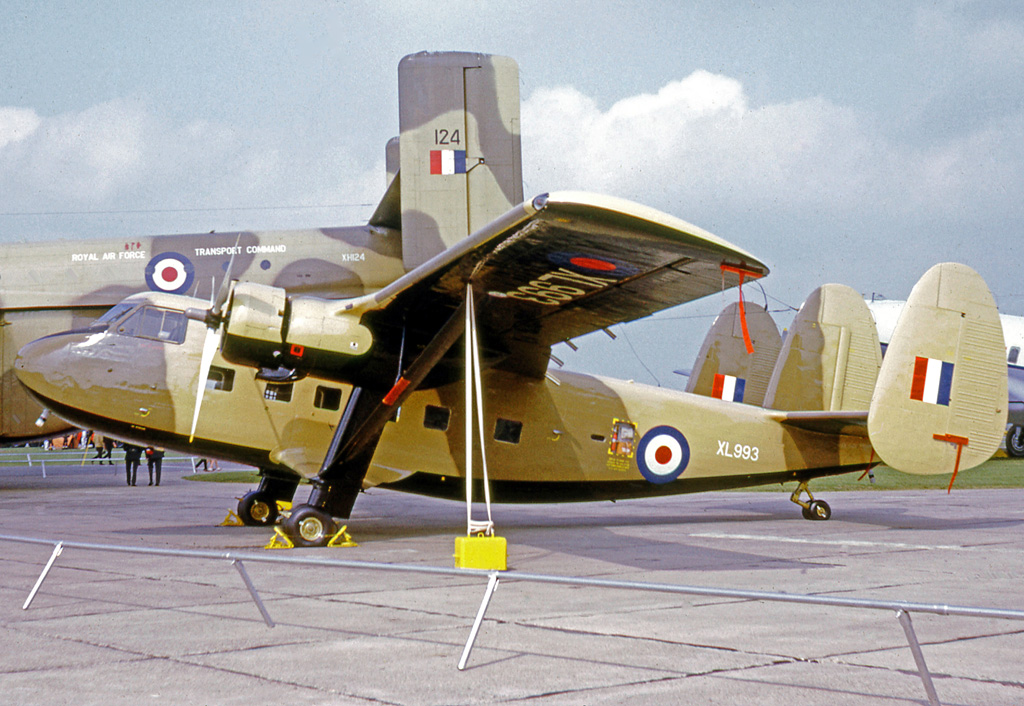

A rare, ex-military aircraft is currently under restoration to fly at Wedderburn Airport near Sydney, Australia. WarbirdsNews dedicated Antipodean correspondent, Phil Buckley, recently paid a visit, and this report describes what he found. Owned by Richard Thompson, the Scottish Aviation Twin Pioneer is one of just seven complete survivors believed to exist, and she’s nearing the end of an extensive period of repairs and maintenance.







Designed and built in the mid-50s at Prestwick Airport, near Glasgow, Scotland, the Twin Pioneer passenger/cargo plane was known familiarly as the ‘Twin Pin’. Her slightly ungainly looks belie her superb Short Take Off and Landing performance. She was capable of getting into very tight, semi-prepared air strips inaccessible to most other aircraft. Britain’s Royal Air Force received 39 examples, and the type saw significant service with them during conflicts in the Middle and the Far East. Another significant customer, the Royal Malaysian Air Force (RMAF), obtained fourteen of the sturdy transports. The Twin Pioneer also enjoyed a successful civilian career, especially with mineral survey companies needing to get supplies and personnel into and out of small, semi-prepared air strips in remote locations.


Now registered in Australia as VH-EVB, this particular Twin Pin rolled off the assembly line in 1962 as construction number 586, the penultimate example from a production run of 87 airframes. The RMAF accepted her as FM1066 on May 28th, 1962, and she continued to serve with them for the next decade. Following FM1066’s military retirement in 1972, an Australian company named Aerial Agriculture acquired her along with three other examples: FM1061, FM1070, and FM1071. The company ferried the Twin Pins from Malaysia to Bankstown Airport near Sydney, New South Wales during mid-1973. They were briefly listed on the Malaysian civil registry for this movement as 9M-ART (our subject aircraft), 9M-ARU (ex-FM1061), 9M-ASB (ex-FM1070) and 9M-ARS (ex-FM1071). The transports sat in open storage at Bankstown for a few months while Aerial Agriculture decided what to do with them. In the meantime, the company reserved registrations with Australia’s Civil Aviation Safety Authority (CASA) for all four airframes, with VH-EVA saved for FM1071, VH-EVB for FM1066, VH-EVC for FM1061 and VH-EVD for FM1070.
VH-EVA was the first of Aerial Agriculture’s Twin Pioneers out of overhaul. She received her airworthiness certificate on May 1st, 1975, and left for an overseas customer in the USA as N48207 the following month. There was then a long pause before the next airframe underwent rebuild. It wasn’t until January 7th, 1982 that VH-EVB received her flight certificate. She has been in and out of airworthiness several times over the past four decades, with her most recent flight being sometime in 2011. Aerial Agriculture’s remaining Twin Pioneers, VH-EVC and -EVD, never flew again sadly. A violent storm swept through Bankstown in the 1980s, damaging the two airframes beyond economic repair. Amazingly though, VH-EVC still survives at Bankstown with the Australian Aviation Museum, while significant chunks of VH-EVD remain in storage at Wedderburn Airport as a spares source for -EVB.






Richard Thompson and his team of volunteers are continuing the work of Sy Allsep, without whose dedication -EVB and -EVC would never have survived to the present day. They are restoring VH-EVB to allow the public to see this amazing aircraft as it once operated. The Twin Pioneer has been receiving regular, intensive maintenance covering engine overhauls, fuselage repairs and airframe inspections. The aircraft has its own hangar, dedicated with a memorial plaque to Sy Allsep.

The hangar provides the long-term possibility of preserving the Twin Pioneer by offering protection from the elements and allowing maintenance and restoration to continue without interference from inclement weather conditions. During WarbirdsNews visit in October, 2016, the restoration crew worked on both Alvis Leonides 531 engines and ran a series of tests, including a full-power ground-run which proved successful. Further efforts have continued and, according to recent news, the focus is now on getting the paperwork sorted. Thompson hopes to have the Twin Pin flying again before the end of the year! The plan is to eventually repaint the aircraft in a representative Royal Air Force scheme. WarbirdsNews will be sure to bring our readers updates on this fascinating project as soon as they become available.





Good luck with the restoration chaps. Loved the twin pin. Found memories of it in Aden and Oman.